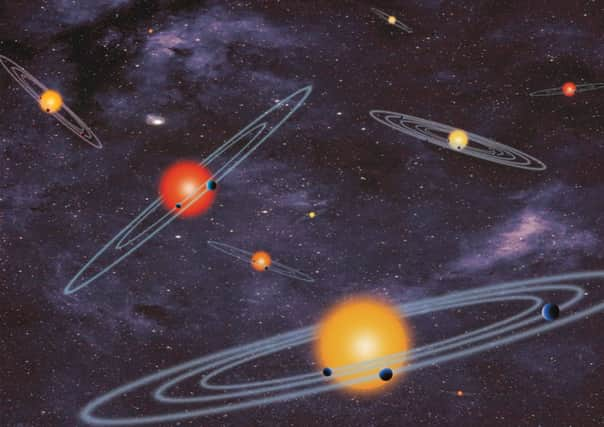NASA discover 715 new planets in ‘Earth 2.0’ hunt


Astronomers used a new confirmation technique to come up with the largest single announcement of a batch of exoplanets - planets outside our solar system.
All the new planets are in systems like ours where multiple planets circle a star - the 715 planets orbit around a total of 305 stars. They were nearly all in size closer to Earth than gigantic Jupiter.
Advertisement
Hide AdAdvertisement
Hide AdFour of those new exoplanets orbit their stars in “habitable zones” where it is not too hot or not too cold for liquid water, which is crucial for life to exist.
Douglas Hudgins, NASA’s exoplanet exploration programme scientist, called the revelation a major step towards the planet-hunting Kepler telescope’s ultimate goal: “Finding Earth 2.0.”
‘Almost doubled number of known planets’
Scientists using the Kepler telescope pushed the number of planets discovered in the galaxy to about 1,700. Twenty years ago astronomers had not found any planets circling stars other than the ones revolving around the sun.
“We almost doubled just today the number of planets known to humanity,” NASA planetary scientist Jack Lissauer said.
The four new habitable zone planets are all at least twice as big as Earth so that makes them more likely to be gas planets instead of rocky ones like Earth - and less likely to harbour life.
So far Kepler has found nine exoplanets in the habitable zone, NASA said. Astronomers expect to find more when they look at all four years of data collected by the now-crippled Kepler; so far they have looked at two years.
Planets in the habitable zone are likely to be farther out from their stars, and planets farther out take more time orbiting, so Kepler has to wait longer to see it again.
Another of Kepler’s latest discoveries indicates that “small planets are extremely common in our galaxy”, said MIT astronomer Sara Seagar, who was not part of the discovery team. “Nature wants to make small planets.”